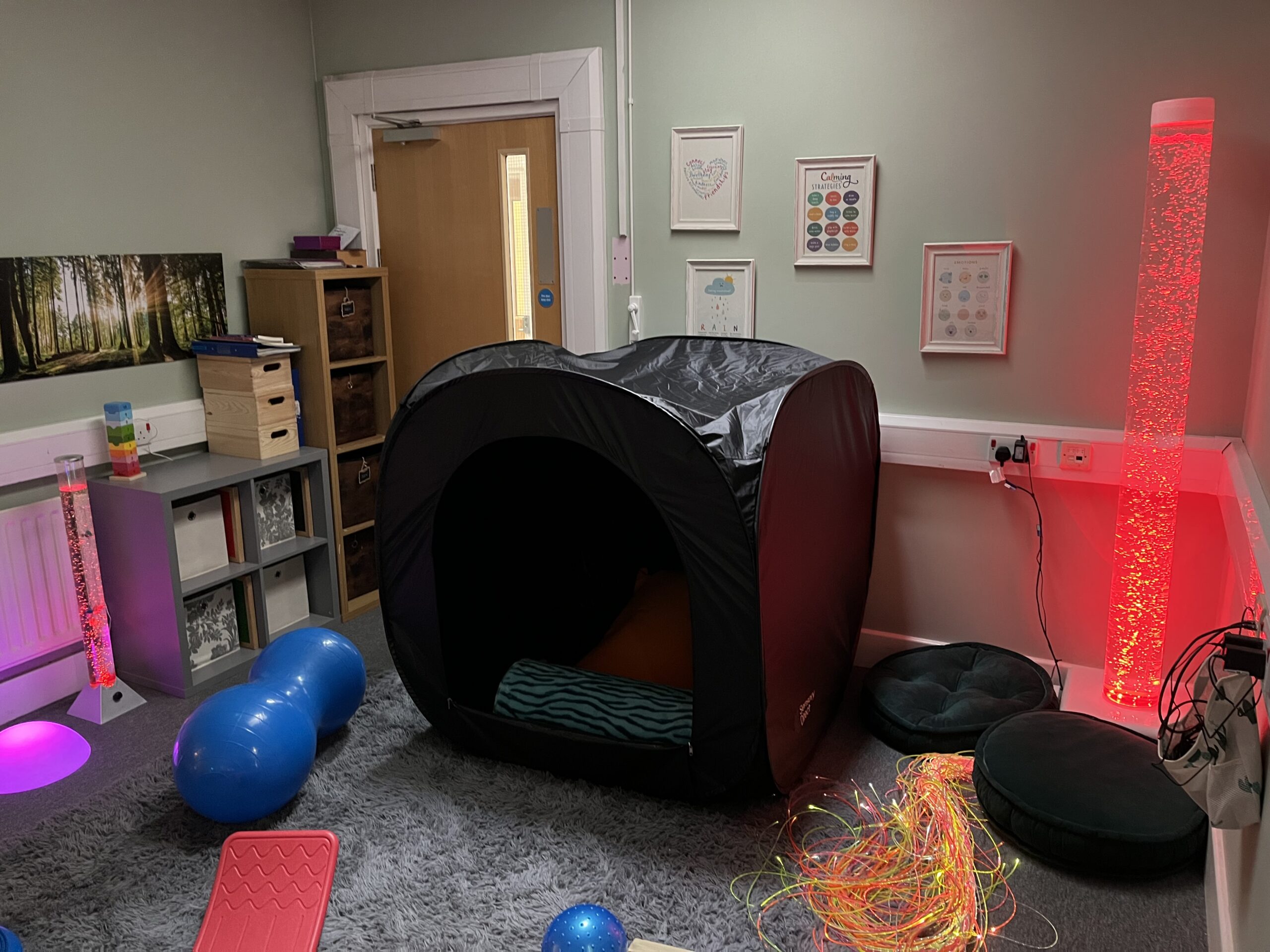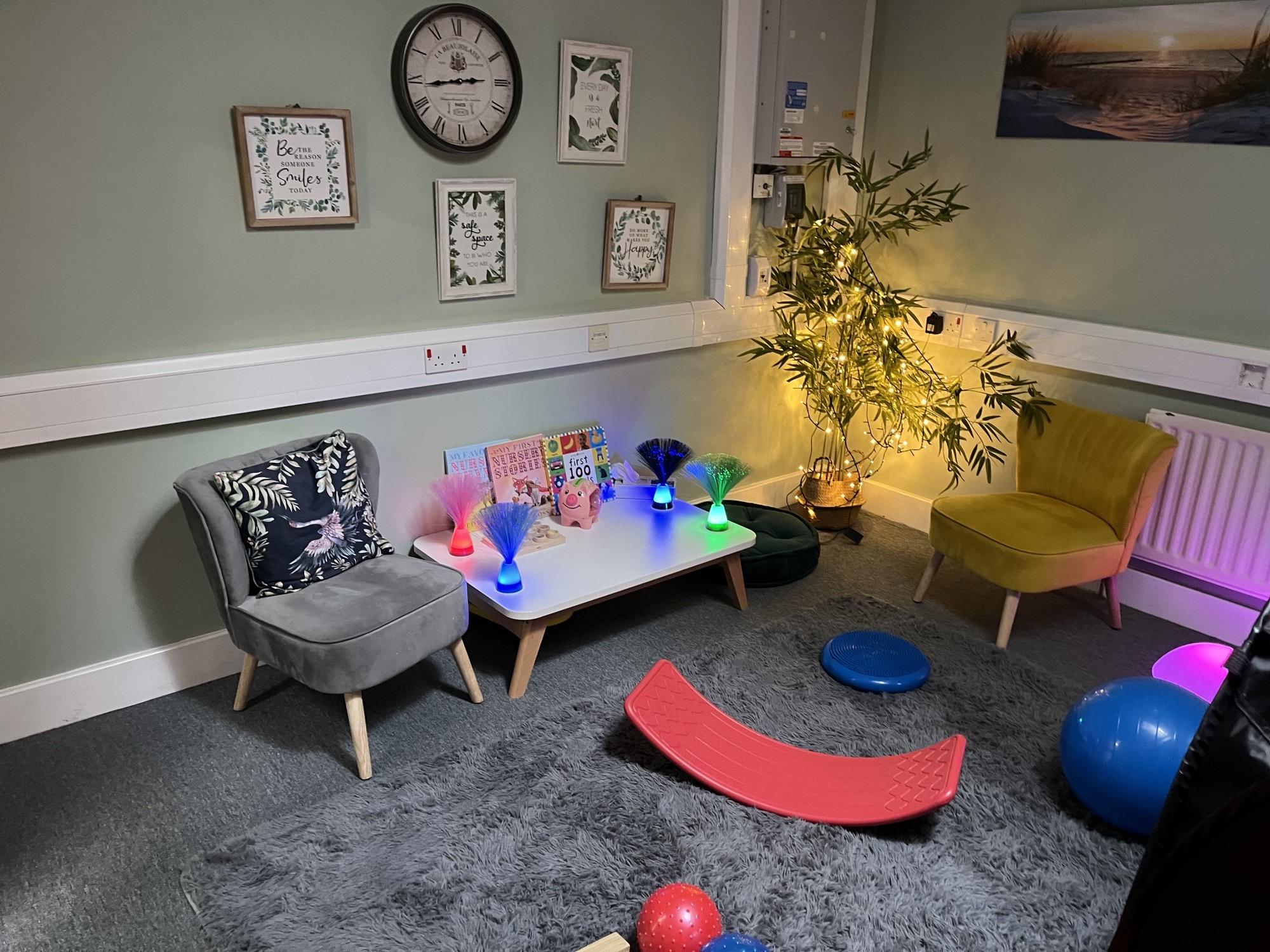Understanding how the benefits and make-up of a sensory space help autism
Autism is a complex neurodevelopmental disorder that affects social interaction, communication, and behaviour. While there is no cure for autism, various interventions and therapies can help individuals with autism improve their quality of life. One such intervention is using sensory rooms or sensory experiences, which have become increasingly popular in recent years to support individuals with autism.
This post explores the benefits of sensory rooms for children with autism, the components that make up a sensory room, and how to create a sensory space at home, in school or in early years setting.
The Benefits of Sensory Rooms for children with Autism
Sensory rooms are designed to provide a safe and controlled environment where a child with autism can engage their senses and regulate their behaviour.
Some of the key benefits of sensory rooms for an autistic child include:
- Calming and regulating behaviour: Sensory rooms can help pupils with autism calm down when they feel overwhelmed or stressed. The controlled environment and sensory stimuli can also help control their feelings and behaviour, reducing instances of self-injury or tantrums.
- Improving sensory processing and integration: Sensory rooms provide a variety of sensory stimuli that can help individuals with autism improve their sensory processing and integration. For example, playing with different sensory products and textures or listening to calming sounds can help them better understand and respond to sensory information.
- Providing a safe and controlled environment: Sensory rooms can provide a safe and controlled environment where children with autism can relax and engage with their senses. This can be especially beneficial for an autistic child who struggles with sensory overload in more stimulating environments.
- Enhancing social skills and communication: By engaging with various sensory stimuli, children with autism can also improve their social skills and communication. For example, playing in a group in a sensory room can help them practise turn-taking and social cues.
Sensory Room Equipment
A sensory room comprises various sensory equipment that works together to provide a range of sensory stimuli. Some of the critical components of a sensory room include:
- Lighting: Sensory rooms often incorporate different types of lighting, including soft lighting, bubble tubes, coloured lighting, and twinkling lights, to create a calming and engaging environment.
- Sounds: Sounds can be used to provide a variety of sensory stimuli, such as calming music, white noise, or nature sounds.
- Textures: Textures can be incorporated into a sensory room through items like soft cushions, textured walls, and sensory balls.
- Aromas: Aromas can be used to create a calming and relaxing environment, with scents like lavender or peppermint being popular choices.
- Movement: Sensory rooms may also include elements of movement, such as swings or rocking chairs, to help individuals with autism regulate their behaviour, and improve their sensory processing and motor skills.
How to Create a Sensory Room at Home or School
Creating a sensory room at home or in early years setting like ours can be a valuable way to support children with autism. Here are some steps to help you get started with a sensory room design:
- Identify the needs of the child with autism: The first step in creating a sensory room is to understand the specific needs of the child with autism. This may involve working with an occupational therapist or another specialist to determine what types of sensory stimuli will be most beneficial.
- Choose the right equipment and materials: Once you better understand the child’s needs, you can choose the right equipment and materials to create your sensory room. Make sure to select items that are safe and age-appropriate.
- Arrange the sensory room in a way that is safe and accessible: It’s essential to arrange the sensory room in a way that is safe and accessible for the child with autism. Make sure that the sensory room is free of clutter and that the child has enough space to move around comfortably.
- Making sure the sensory room is well-maintained: Regular maintenance of the sensory room is vital to ensure that it remains a safe and effective environment for the child with autism. This may include cleaning the sensory room regularly, replacing broken or worn items, and ensuring that all equipment is in good working order.
Sensory rooms provide a safe and controlled environment that can be incredibly beneficial for children on the autism spectrum. These rooms can help calm and regulate behaviour, improve sensory processing and integration, and enhance social skills and communication. By incorporating various sensory stimuli, such as lighting, sounds, textures, aromas, and movement, children with autism can engage with their senses in a way that supports their overall well-being.
Creating sensory spaces at home, in schools or in early years settings such as ours can be a valuable way to support children with autism. It offers a fun, calming environment that can be soothing and stress-releasing for many children.
Visit our sensory room
Here at Grow Learn Play Project, we have our calm room for children to visit and use as a break out space. It is a dedicated space which includes various sensory resources, in a calm and quiet space.




